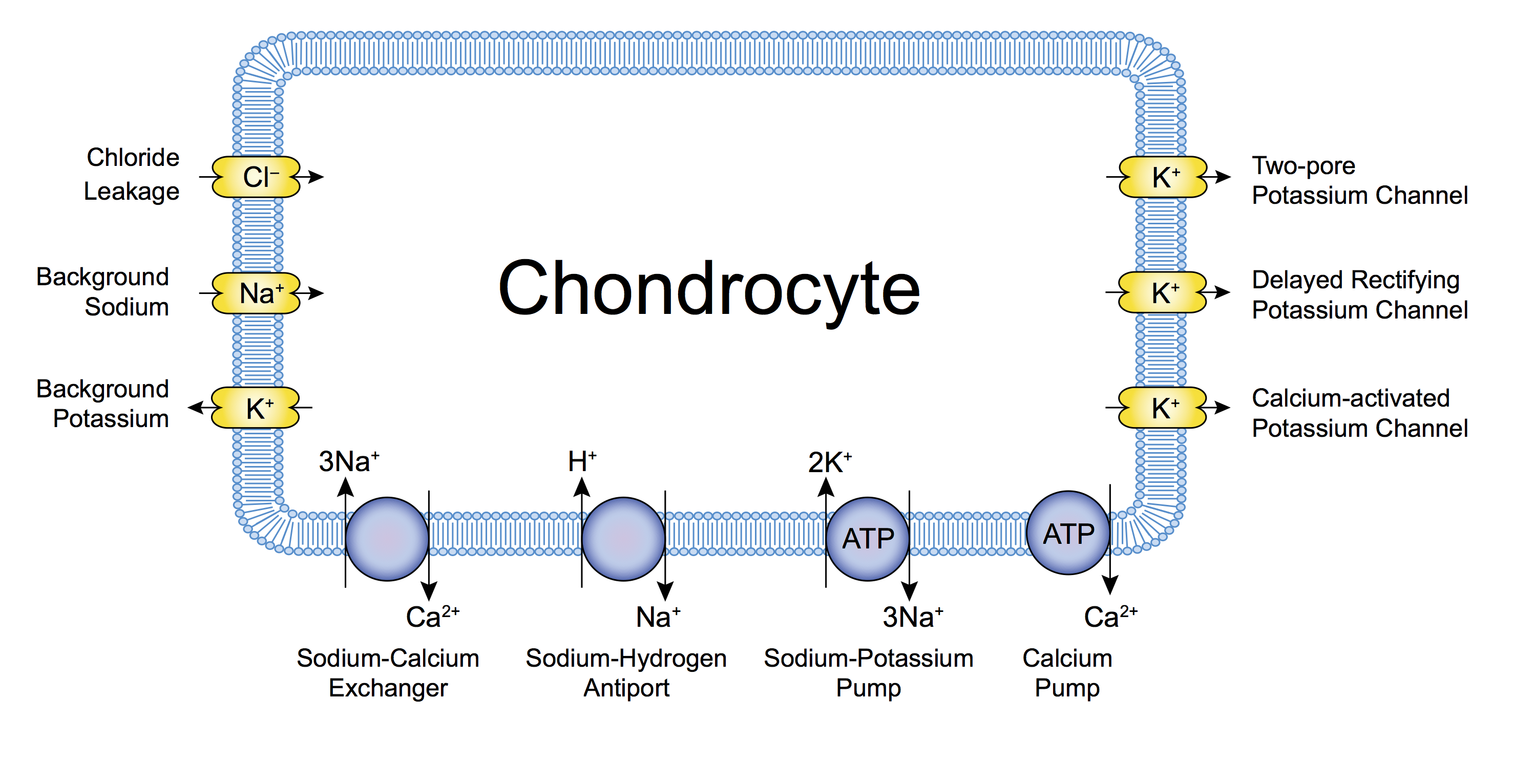Cartilage is the soft tissue that cushions bones at joints and usually allows for bones to slide past each other. Osteoarthritis is a debilitating disorder that’s caused when cartilage starts to wear out, resulting in painful and reduced mobility for sufferers of the condition. There exist no drugs that slow down the progression of the disease.
In this work, we use computer models to better understand the cell responsible for the synthesis of cartilage: the chondrocyte.

Chondrocytes seem to be at the crux of our story because they are the single cell type found in cartilage. They are extremely active cells capable of responding to a range of mechanical and chemical stimuli. Research indicates that these responses are crucial to their creation and maintenance of viable cartilage, though the details of these processes are poorly understood.
In our study, we use computer models of the chondrocyte to study its response to its constantly changing environment. In particular, we look at how the cell’s resting membrane potential (RMP) evolves, as abnormal regulation of the RMP in these cells is linked to abnormal volume regulation when loaded, altered signaling and cell death.
Focussing our attention on a single chondrocyte cell residing in deep regions of cartilage, we construct an ordinary differential equation (ODE) system model that links the membrane potential of the cell with the flux of various ions in and out of the cell membrane through ion channels. Our solver for this equation system is implemented in Octave, and a current version is available as Free Software under the GNU GPL.

When our computer model of the chondrocyte is subjected to several different clinically-relevant environments, we begin to gain an understanding of the underlying behavior of the cell.

Our research suggests ideal conditions that the cell must be subjected to as it relates to the synthesis of viable cartilage, and circumstances where this might be disrupted. We envision that the insight gained from this work will help in multiple ways. First, it will help clinicians and biochemists design better drugs to treat the condition of osteoarthritis. Second, it will help suggest to patients subtle changes to their lifestyle which could help reduce the degradation of cartilage resulting from age, greatly improving their quality of life.